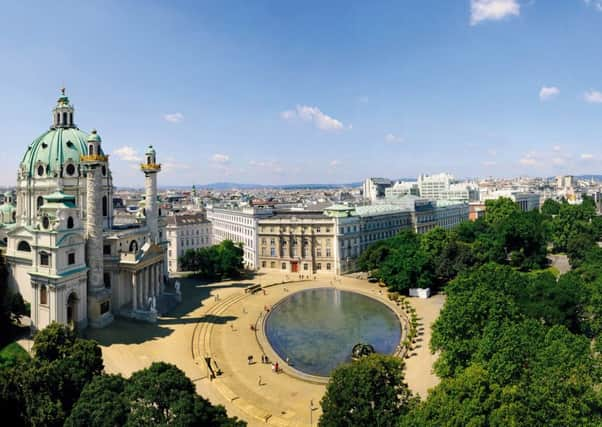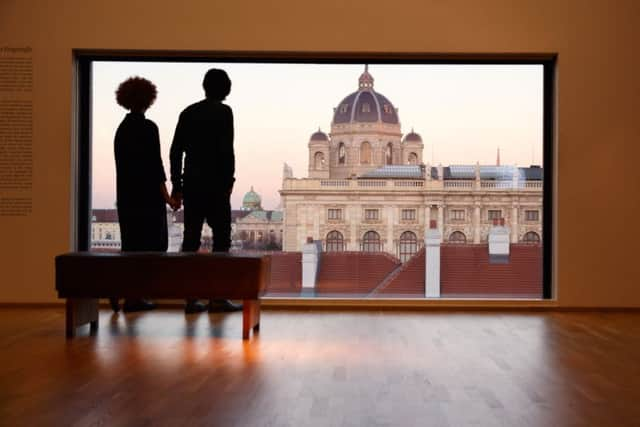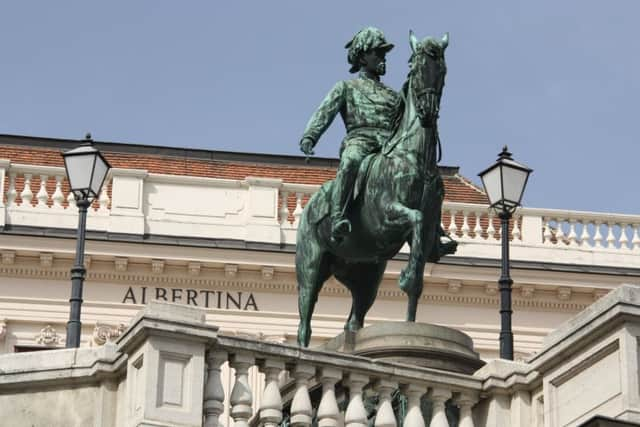Travel: Coffee and culture in Vienna


Beneath the flagstones under our feet lie some of the last victims of the Second World War. Hundreds were buried alive in the cellar they were sheltering in when an Allied bomb demolished the apartment building above it, never to be unearthed. It’s a grim reminder of one of the darkest chapters of Vienna’s history.
As packs of office workers mill around the Albertinaplatz clutching beers and bratwurst from the Bitzinger stand, the horror that took place here 70 years ago would have been unimaginable had our guide Alexa Brauner not been at pains to point it out.
Advertisement
Hide Ad“We were on the wrong side for a long time so now we pride ourselves on being neutral,” she says gesturing to the austere Monument Against War and Fascism. Her mood brightens a little. “But here in Austria, we now have the cake, the cream and the cherry on top.”


Unlike many cities on the Continent, Vienna’s imperial grandeur largely escaped the wrath of Allied bomber squadrons – and the world is the better for it. Setting off behind Alexa around the Innere Stadt, Vienna at first glance looks and feels like a living, breathing museum. Old white-crested trams trundle along the Ringstrasse past the opulent State Opera House – itself a victim of the same bombing raid – while the clatter of horse-drawn carriages echoes around the cobbled lanes near the Hofburg Palace.
But if you scratch the surface of its stately facades, a real urban grit is never far from sight. For one thing, you’ll find as many fashion-loving hipsters strutting down its graffiti-daubed streets as you would in New York, Paris or London, not to mention wine bars at every turn (wine is produced within the city limits, the only capital city with that distinction).
It must be doing something right. Vienna has consistently been voted the best city in the world for quality of life. As if that weren’t incentive enough to impulsively check property prices and job listings, I’m overjoyed to find that the Viennese are people after my own caffeine-addled heart, with daily life revolving around coffee houses.
Dubbed Vienna’s “living rooms”, the country’s colourful political and intellectual life is played out amid the burr of coffee machines. During this year’s presidential election, for instance, some coffee houses went so far as seating opposing factions in different parts of the café.


Most locals have a particular favourite to perch in. Leaving Alexa at the Hofburg, we agonise over where to get our fix and finally decide on Café Landtmann – once frequented by Sigmund Freud and Marlene Dietrich.
Advertisement
Hide AdSettling into a booth, we choose an einspäner (strong espresso with whipped cream) and a Sachertorte from the seemingly inexhaustible menu of coffee and cakes as stoney-faced waiters in dinner jackets sweep up and down a long wood-panelled room with chandeliers.
A business meeting in a corner booth erupts every now and then in a cacophony of boisterous laughter while a grey-haired lady adjacent thumbs her way through a newspaper attached to wooden paddles.
Advertisement
Hide AdOf course, no two kaffeehäuser are alike. A resurgence of the once outmoded institution has encouraged a new wave of contemporary places to open alongside old stalwarts. Supersense, for example, is much more boho, combining coffee and a focus on local producers with kitsch, classic instant cameras and vinyl, while traditional Demel gives a taste of turn-of-the-century high society.


For a real insight into how the other half lived, Schönbrunn Palace on the outskirts of the city is a must. The arresting honey hues of the former summer residence of the Habsburg dynasty show it hasn’t lost any of its imperious airs.
This year marks the centenary of the death of perhaps its most illustrious resident, Emperor Franz Joseph, the elderly monarch at the helm as Europe plunged the world into its first global conflict. The modern Austria was forged in the tumult of his 68-year reign, which we learn about in an absorbing exhibition of artefacts from his lifetime.
Forty rooms of the 1,441 at the palace are open to the public, where we discover firsthand the luxurious if rigid existence of the royal family, right down to the lengthy and obsessive beauty regimen of Franz Joseph’s wife, Empress Elisabeth (“Sisi”) – the Kim Kardashian of her day.
One thing that definitely can’t be accused of being starchy, on the other hand, is our hotel. Above the entrance to the 25hours Hotel, in burning orange neon light, is scrawled a poignant welcome message: “We are all mad here.” It’s our kind of place.


One of the city’s newest fixtures, it’s ideally located just beyond the Ringstrasse and five minutes’ walk from the MuseumsQuartier – one of the largest modern art and cultural complexes in the world occupying a former Habsburg stables.
Advertisement
Hide AdWhile a circus theme (stay with me) may be undeniably quirky, it makes for a more relaxed stay all round. Its rooftop bar – with views of much of central Vienna – also regularly attracts partygoers and local celebrities, occasional patrons including hirsute Eurovision winner Conchita Wurst.
Of course, we couldn’t visit the city of Mozart, Beethoven, Strauss et al without at least checking the events listings. We’re in luck. The Wiener Symphoniker is performing a programme of Mozart and Brahms on our last night.
Advertisement
Hide AdI can count the number of classical performances I’ve ever attended on one hand but there really is something genuinely special about arriving at the Musikverein in our finery, sipping champagne as strings hum and murmur for the warm-up. The spectacle and the experience alone is worth every cent.
Classical dramatics meld into smooth jazz as we arrive at the SKY Bar for a nightcap. Our cocktail order placed, we look out over the rooftops of the city. The young crowd sip from frothy coupes and mingle as the centuries-old Stephansdom, bathed up in white light, looms large on the skyline behind them. Vienna is definitely a young soul in an old skin, and happily so.
FACT FILE
• EasyJet (www.easyjet.com) currently flies to Vienna from Edinburgh three times a week with fares starting at £32.49 one way. Jet2.com fly twice weekly from Edinburgh starting at £32 one way.
• A stay in a suite room at the 25hours Hotel Vienna at MuseumsQuartier (with king size bed, Nespresso machine and kitchenette) starts from €153 a night. www.25hours-hotels.com
• The exhibition Franz Joseph 1830 - 1916: Man And Monarch continues until 27 November. www.franzjoseph2016.at